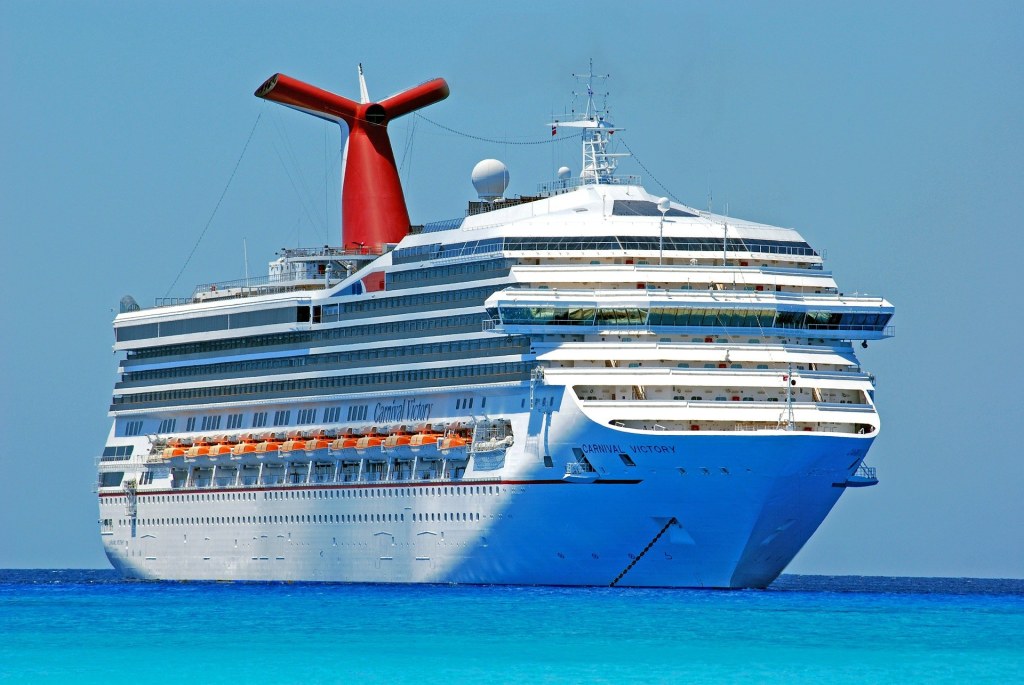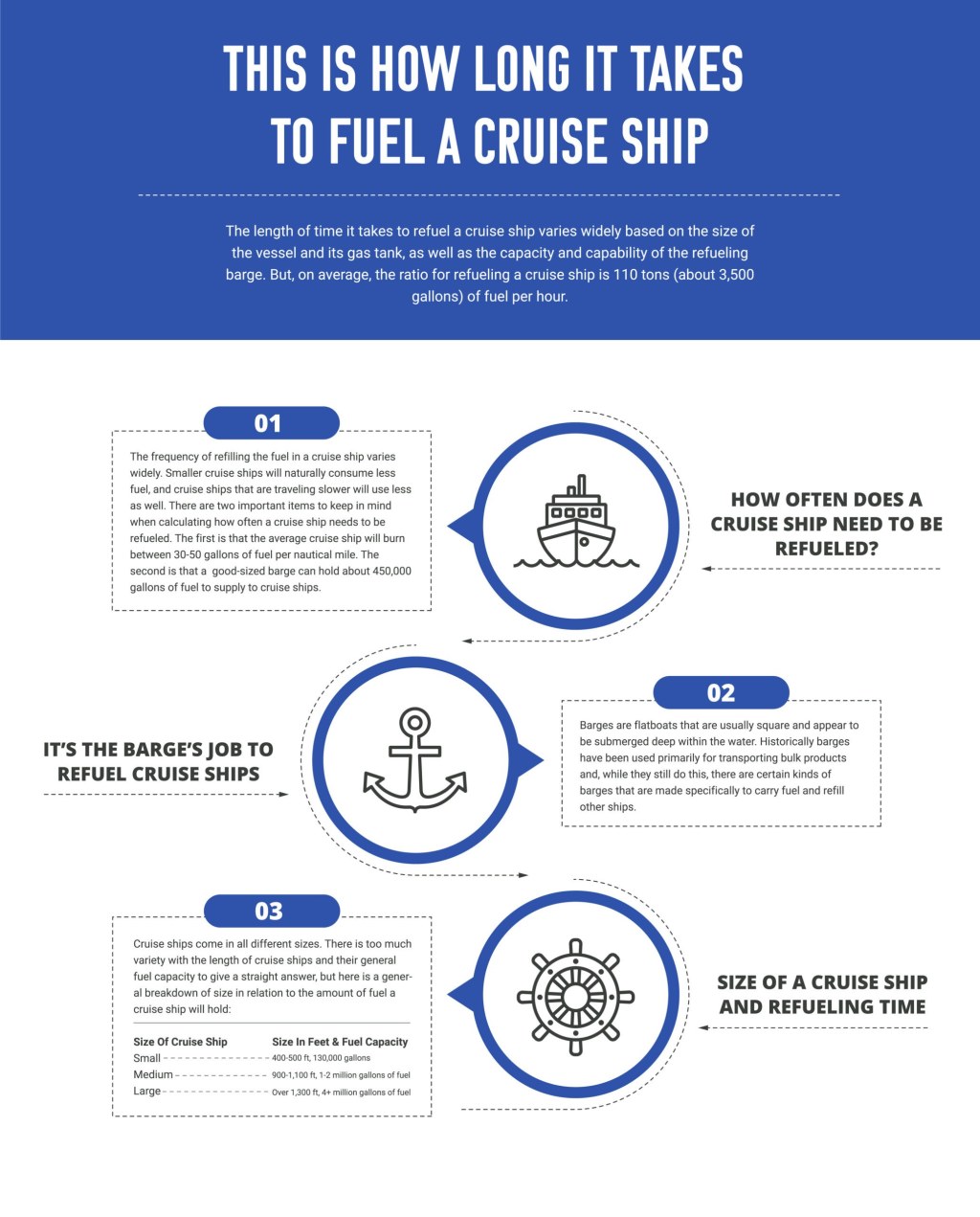How Many Gallons of Gas Does a Cruise Ship Hold?
Introduction
Dear cruise ship aficionado,
Welcome to a captivating journey into the depths of the cruising world. Today, we embark on an exploration of an essential aspect of cruise ship operations – the amount of gas these magnificent vessels hold. As a cruise ship enthusiast, you understand the allure and grandeur of these floating cities. Let us delve into the specifics, answering the burning question: how many gallons of gas does a cruise ship hold?
Before we dive into the details, it’s important to note that the figures provided in this article are approximate, as the capacity can vary among different cruise ships. However, we aim to provide you with a comprehensive understanding of the subject matter.
So, fasten your seatbelts and get ready to uncover the secrets of fuel storage on these colossal vessels.
What is the Fuel Capacity of a Cruise Ship?

Image Source: acruisingcouple.com
🔍 One of the first things that come to mind when discussing the fuel capacity of cruise ships is the sheer magnitude of this quantity. Cruise ships are designed to carry vast amounts of fuel to power their engines during their voyages.
📜 Cruise ships typically hold anywhere between 1 million to 8 million gallons of gas, depending on their size and intended travel distance. This incredible volume is necessary to ensure a smooth and uninterrupted journey, regardless of the destinations and durations involved.
🔍 The fuel capacity of a cruise ship can be compared to that of a small town. The sheer magnitude of this quantity is mind-boggling, as it takes a considerable amount of fuel to propel these massive structures through the seas.
📜 To put things into perspective, a medium-sized cruise ship can consume around 30,000 gallons of gas per day. This staggering figure highlights the immense energy requirements of these vessels.

Image Source: acruisingcouple.com
🔍 The fuel storage is usually located in dedicated tanks within the ship’s hull. These tanks are strategically designed to maximize space efficiency and ensure stability throughout the voyage.
📜 It’s worth mentioning that cruise ships are increasingly adopting environmentally-friendly fuel alternatives, such as liquefied natural gas (LNG) and low-sulfur diesel, to reduce their carbon footprint. These alternatives are becoming more prevalent as the industry strives towards a greener future.
Who Determines the Fuel Capacity?
🔍 The determination of a cruise ship’s fuel capacity is a meticulous process that involves various stakeholders. The ship designers, engineers, and regulatory bodies collaborate to establish the optimal fuel capacity for each vessel.
📜 The fuel capacity is heavily influenced by factors such as the ship’s size, intended route, and passenger capacity. These elements play a crucial role in determining the required amount of fuel for a safe and efficient voyage.
🔍 Additionally, governmental regulations and environmental considerations also contribute to defining the fuel capacity. These regulations ensure that cruise ships comply with safety standards and minimize their impact on the environment.
When is the Fuel Capacity Determined?
🔍 The determination of a cruise ship’s fuel capacity occurs during the ship’s design and construction phase. This essential step ensures that the vessel is equipped with sufficient fuel storage capabilities to fulfill its operational requirements.
📜 The fuel capacity is established early in the design process, considering factors such as the ship’s size, propulsion system, travel distance, and expected fuel consumption. These calculations are crucial for ship designers to create a safe and efficient vessel.
🔍 Once the fuel capacity is established, it remains a fixed characteristic of the ship throughout its operational lifespan. However, advancements in fuel efficiency and alternative fuel technologies may influence future designs and fuel storage requirements.
Where is the Fuel Stored on a Cruise Ship?
🔍 The fuel storage on a cruise ship is strategically located within the vessel’s hull. These dedicated fuel tanks are specifically designed to maximize space utilization and ensure a safe and stable voyage.
📜 The fuel tanks are typically situated in the lower parts of the ship, as close to the ship’s center of gravity as possible. This positioning helps maintain stability, preventing excessive rocking or tilting that may affect passenger comfort and safety.
🔍 The fuel tanks are constructed with robust materials to withstand the harsh marine environment and prevent leakage. Stringent safety regulations and inspections ensure that these tanks adhere to the highest standards to minimize the risk of accidents.
Why is the Fuel Capacity Important for Cruise Ships?
🔍 The fuel capacity is of utmost importance for cruise ships due to their reliance on efficient fuel management. The fuel supply directly impacts the ship’s range, duration of travel, and overall operational costs.
📜 With predetermined fuel capacity, cruise ships can carefully plan their itineraries, accounting for necessary refueling stops and potential fuel costs. Efficient fuel management is essential to ensure smooth operations and avoid unforeseen disruptions during voyages.
🔍 Additionally, the fuel capacity directly affects the ship’s environmental impact. By optimizing fuel consumption and exploring greener alternatives, cruise ships can reduce their carbon footprint and contribute to a more sustainable future for the industry.
How is the Fuel Capacity Determined?
🔍 The determination of a cruise ship’s fuel capacity involves a complex calculation process that considers various factors, including the ship’s size, design, intended travel distance, and expected fuel consumption.
📜 Ship designers and engineers analyze these parameters to calculate the optimal fuel storage capacity. They strive to strike a balance between maximizing the ship’s range and minimizing the weight added by the fuel storage system.
🔍 The fuel capacity determination also takes into account safety regulations, environmental considerations, and the availability of refueling facilities at the intended ports of call. All these factors culminate in defining the ideal fuel capacity for each cruise ship.
Pros and Cons of Large Fuel Capacity
🔍 Large fuel capacity on cruise ships offers both advantages and disadvantages. Let’s explore the pros and cons of these colossal fuel reserves:
1. Advantage: Extended Range – A large fuel capacity allows cruise ships to navigate longer distances without refueling, enabling them to reach remote and exotic destinations.
2. Advantage: Flexibility – With ample fuel reserves, cruise ships have more flexibility in route planning and can adapt to changing weather conditions or unforeseen circumstances.
3. Disadvantage: Increased Weight – The additional fuel storage adds weight to the vessel, which can impact fuel efficiency and maneuverability.
4. Disadvantage: Higher Costs – Operating a cruise ship with a large fuel capacity incurs higher fuel costs, especially in unpredictable market conditions.
5. Disadvantage: Environmental Impact – Larger fuel reserves contribute to a higher carbon footprint, necessitating efforts to adopt greener alternatives and reduce emissions.
Frequently Asked Questions (FAQs)
1. How long can a cruise ship travel without refueling?
A cruise ship can typically travel for several days to a few weeks without refueling, depending on its fuel capacity and cruising speed.
2. Can cruise ships run out of fuel?
In normal circumstances, cruise ships have detailed fuel management plans to prevent running out of fuel. However, unforeseen circumstances or extreme weather conditions may require unscheduled refueling.
3. What happens if a cruise ship runs out of fuel?
If a cruise ship runs out of fuel, it would lose propulsion power and become adrift. In such situations, emergency protocols are in place to ensure the safety of passengers and crew until assistance arrives.
4. How much does it cost to refuel a cruise ship?
The cost of refueling a cruise ship depends on factors such as fuel prices, the ship’s fuel capacity, and the specific itinerary. Refueling costs can range from hundreds of thousands to millions of dollars.
5. Are there any regulations regarding cruise ship fuel consumption?
Yes, there are international regulations such as the International Maritime Organization’s (IMO) Energy Efficiency Design Index (EEDI) that aim to reduce greenhouse gas emissions from ships and improve fuel efficiency.
Conclusion
🔍 In conclusion, the amount of gas a cruise ship holds is staggering, with millions of gallons stored in dedicated tanks within the vessel’s hull. This fuel capacity allows these floating cities to embark on unforgettable journeys, reaching far-flung destinations with ease.
📜 While large fuel reserves offer advantages such as extended range and flexibility, they also come with disadvantages, including higher costs and increased environmental impact. Nevertheless, the cruising industry is actively exploring greener alternatives to minimize emissions and create a sustainable future.
🔍 As a cruise ship enthusiast, you now possess a deeper understanding of the fuel capacity of these magnificent vessels. So, the next time you embark on a cruise adventure, take a moment to appreciate the engineering marvel that allows these ships to navigate the seas and create unforgettable memories.
Final Remarks
Dear reader,
Thank you for joining us on this enlightening journey into the realm of cruise ship fuel capacity. We hope this article has provided valuable insights and satisfied your curiosity about the subject.
🔍 It’s important to note that the fuel capacity mentioned in this article is based on general estimates and can vary among different cruise ships. For accurate and up-to-date information, refer to specific ship specifications.
📜 We encourage you to continue exploring the fascinating world of cruising and to stay informed about the industry’s efforts to reduce its environmental impact.
Safe travels and bon voyage!